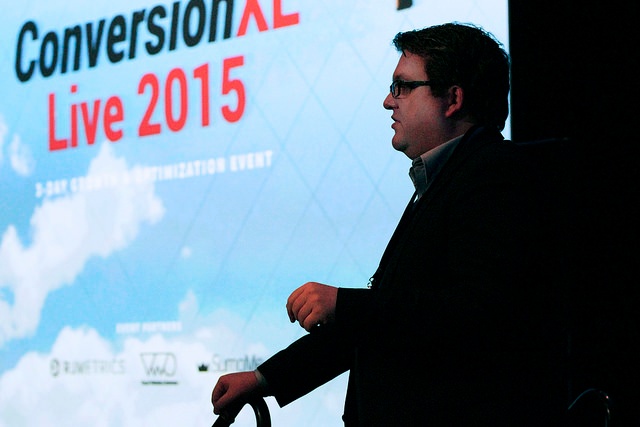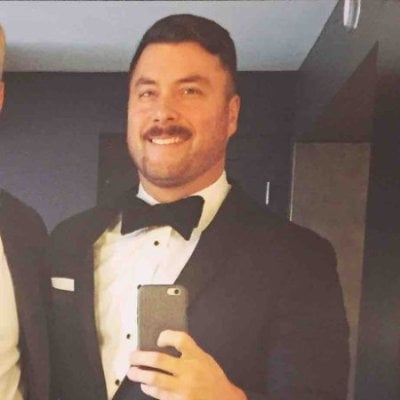
Last month I attended ConversionXL Live, where we spent three days talking about conversion rate optimization (CRO). It was a fascinating look at the latest trends in site design and the chance to connect with others who had the same question that I did: how do I increase conversions?
For me, there were two key presentations:-
Unbounce co-founder Oli Gardner, focused on the importance of landing pages. "Never start a marketing campaign without a landing page," he said, explaining that they give you the ability to measure the efficacy of your messaging, the channels you're using to promote a campaign, and to start a virtuous cycle of customer engagement.
-
IdealSpot.com CMO and founder, Bryan Eisenberg, discussed the buyer journey, or the buyer 'legend' as he put it. To increase conversions, spell out the purchasing path as though we're telling a story. (He pointed to a talk from South Park creators Trey Parker and Matt Stone about the art of storytelling that could help create persona stories.) Make the buyer the hero of that story, and focus on what we want that buyer to accomplish as a result of their purchase. Ask, 'are we in the business of selling products? Or helping our customers buy products?' Optimizing around this hero narrative should produce better conversions.
I also met some great people during the show, who shared their key takeaways:
From Jessica Potter-Adkins, director of marketing, Agent Pipeline, Inc.
For my business, attention driven design is key. Attention ratio is the number of links on a page or e-blast, to the number of conversion goals. Your attention ratio should be 1:1, because every campaign has one specific goal—therefore, you should have only one call to action. So, as the attention ratio goes down, the conversion rates go up. The exception, however, is when you have multiple links or calls to action, with the same goal. This not only works for my landing pages but my email marketing campaigns—which is a huge source of lead generation.
It’s imperative to be clear, simple, and to the point—forget pretty content and unnecessary information—look at the purpose! The more steps you have, the more people disappear. Since the conference, I have reorganized a lot of content, creating a more logical user experience, and just within a few short weeks, I have noticed changes in lead generation and conversions.
From Tyler J. Koenig, digital strategist, Agora Publishing
Conversion XL live was amazing for a lot of reasons, but the game-changer for me was the emphasis on "one page one purpose." You might feel like you're doing your traffic a solid by putting everything out on the table, but the opposite is true. Lead them through a clear path that allows for discovery without being distracted or caught off guard. Having one goal at each step in the funnel will improve user experience and help you prioritize testing for ROI. One of my favorite quotes: "Aim for conversion lifts. Don't be a split test junkie!"
From Bobby Hewitt, owner of Creative Thirst
CRO is hard work. Optimization is the combination of a lot of disciplines all rolled into one: data scientist, psychology expert, online marketer, web designer, and user experience designer (UX). You need to understand the buyer's motivation, and their experience from start to finish, from a number of different perspectives. This is what makes conversion optimization complex, but really, really interesting. (And why finding a good conversion rate specialist is difficult!)
CRO is a process. It's not random ideas thrown together to see what works. Good CRO is based on research grounded in the context of your visitor’s buying journey. It’s not about selling more but rather helping people buy. Too many business owners don't understand this, and too many CRO practitioners are not following a standard optimization process, primarily because we’re still in the early stages of growth in our industry.
The ugly truth is that no one really know what will work or not. Not even people within a company who get paid to make these decisions or even the owners of a company. The more you test the more you'll get, including good insights into the behavior of your buyers, innovation, learnings and revenue lifts.
Ultimately, optimizing conversions starts at the highest level of an organization, in the C-suite, (CEO). Businesses are persuasive systems and when conversions are broken, it's because of the system, not the people or tests. What’s needed is a business philosophy where optimization is seen as a journey not the destination, which is only achieved at the highest level by focusing obsessively on the customer.
Further Reading:
If you found the tips here helpful, you might also like:
- Live chat can help increase conversions, as Johnathan Dane showed in a previous article on how clever greeters increase conversions.
- Neil Patel and Joseph Putnam found that live chat increased sign ups by 31% at EZ Texting.

